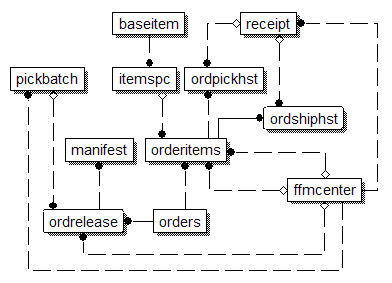ATP inventory fulfillment data model
The ATP inventory fulfillment data model shows the relationship between database tables that contain information about ATP inventory fulfillment.
Click any of the database table boxes to see more information about that table. You can also refer to one of the following types of ATP inventory data models: ATP inventory, ATP inventory adjustment, ATP inventory expected, ATP inventory orders, and ATP inventory reservations.
